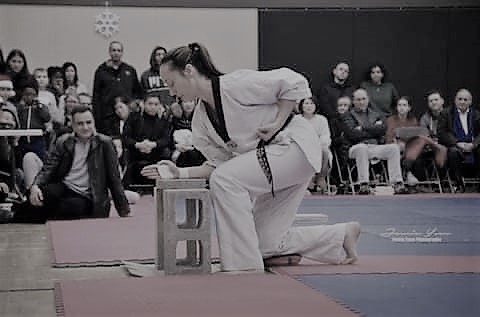Bottomless wonders spring from simple rules, which are repeated without end. – Benoit Mandelbrot
(5 minute read)
Heightened stress, disconnection and abrupt change have underscored the pandemic year. Consider your life right now – your desired future state and potential. The flickering ember that burns inside that you may have forgotten. What beliefs, practices and patterns do you see in this moment? What stories do they tell? Do they propel you forward, or hold you back?
As a change management professional, and as a martial artist, I have encountered a tool that aids in fostering connection, averting paralysis and shifting unhelpful relational patterns. A practice that helps you become unstuck, when feeling unglued.
Introducing simple rules.
Simple rules within organizations and teams function as agreements that inform collective behaviours and interactions.[1] They help deal with complex problems as they ‘cut through the noise’ and allow groups to adapt to rapidly changing situations. You’ll find these used within most major firms. For example, among Google’s eight simple rules, you will encounter, “Give value for free” and “Stay simple.”[2] Other organizations may focus on behavioural attributes: “Carry a positive attitude” or “Employ ethical behaviour.”
In a world where the pace of change is accelerating, “simple rules provide a powerful weapon against the complexity that threatens to overwhelm individuals, organizations, and society as a whole.”[3]
To harness these in your personal life, think of them as your values-based ‘mini mottos’ for how you want to approach challenges. They can include rules around how you engage with others, how you create healthy boundaries, how you manage relationships, how you play / create/ innovate, or how you make difficult decisions[4].
Simply put, imagine short, values-based, aspirational statements that guide your interactions or decisions.
Here are a few examples that resonate for me that I try to apply within my team:
- Connection before content. Before I knew anything about simple rules, change management or organizational development, I was a humanitarian aid worker. Connection before content was essential to demonstrating respect for local customary practices critical to building relationships when working across cultures – particularly in politically charged or post-war circumstances. I could not turn up to a meeting in Tanzania, or Afghanistan, or Kosovo and expect to launch directly into business. The unspoken cultural expectations (which varied with each community) were to inquire as to the participants’ well being, their families, their businesses, their lives, and then- after an appropriate passage of time- ‘get down to business.’ This was essential to building trust and fostering relationships.
- Make a positive difference in every interaction. My hope and aim is that anyone who engages with me at work (client or colleague) walks away with something positive – be it a new learning, a feeling of safety, or a sense of appreciation.
- Model authenticity in change / challenge. To build trust and psychological safety at work, I personally believe this is a key simple rule. Being able to admit that I don’t have all the answers, or that I’m perplexed by a sticky problem, or that I’m having a hard day, invites others to acknowledge that sometimes it’s okay to not be okay. Aligned with this simple rule is another we have on our team that speaks to ‘Having each other’s back.’ Tied together, this has built a culture of support to lift each other up when times are tough.
- Maintain curiosity. Perhaps one of the hardest for me, taking this approach when feeling pinched has been particularly helpful in diffusing conflict and bridging challenging relationships. Think of a time when someone may have ignored your greeting at work. Perhaps your first thought was one of judgement: ‘What a snob!’ or ‘What have I done?’ or ‘They always seem so pre-occupied.’ Now imagine if that person had an earbud that you didn’t see, or was lost in a personal problem that caused them to lose focus at work. Perhaps they were experiencing some physical pain or health challenge. What story did you create in your mind when they did not immediately respond? By maintaining curiosity in your interactions, and following-up by checking it out, you may discover that the story you created did not match the intention of the individual.
In my taekwondo practice, we have a number of tenets we recite before training that translate well into simple rules:
- Follow your conscience
- Show etiquette / respect others
- Fulfill your duty
- Express your love for others
- Increase / share knowledge
- Have a sound body / peace of mind/ indomitable spirit
These represent the shared values we all agree to adhere to when we train as a community. Notice that none exhort you to demonstrate prowess. They speak profoundly to how you show up for others, demonstrate personal integrity, and share your gifts. As a black belt, I am expected to honour my dojang by living these values on and off the mats.
Now What?
Creating your own simple rules can help shape patterns to make your vision a reality. They work because they are memorable, (you are their creator), they are easy to follow, and they are concrete.
Start by exploring what you want to shift in your personal life, and extend into the areas you feel are holding you back. Is there something you wish to change or improve? What brings you joy or purpose? Are there boundaries you need to set to fulfill your needs? What expectations do you have of yourself in terms of how you wish to engage with others in your personal and business relationships?
The process of creating your own simple rules can look something like this:
- Step one: Reflect on the patterns you’d like to shift or create. Notice them. They reveal the complexity of your tale and multiple truths.
- Step two: Write down three to five values that are important to you. Find what fits.
- Step three: Create a simple rule for each value you identified. Begin by building positive statements – each starting with a verb. Then try applying one rule.
- Step four: Observe the patterns that shift or remain static when you apply your simple rules. What surprises you? Consider what you wish to adapt and what no longer serves you. Adjust accordingly.
As human beings, we are complex adaptive systems in our own right. We are never completely static in our growth, values, or vision for the future. Having simple rules can set a container or boundaries for consistency, while balancing opportunities for creativity, innovation and exploration. In these uncertain times, what simple rules will re-ignite your ember?
What is one shift YOU will make today?

[1] https://www.hsdinstitute.org/resources/simple-rules.html
[2] https://www.incomediary.com/google-follows-these-8-simple-rules-and-so-should-you/
[3] Simple Rules: How to Thrive in a Complex World, by Donald Sull and Kathleen Eisenhardt
[4] Mallary Tytel, Royce Holladay and Glenda Eoyang – Human Systems Dynamics Institute www.hsdinstitute.org




